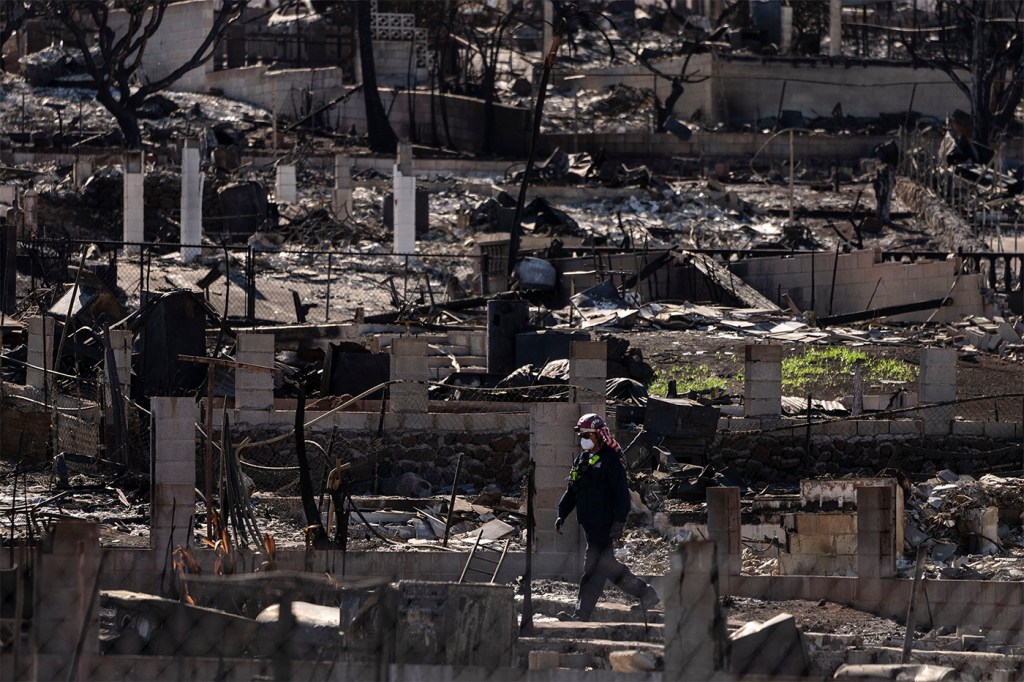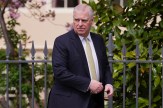Lessons from Maui wildfires: Build channels of communication before firewalls

The deadly wildfires that consumed the town of Lahaina on the island of Maui have shocked and horrified people around the world, and raised questions about how they could happen in a state known for its lush beauty.
As wildfires and droughts increase due to climate change, experts in resilience at Northeastern University say there are important lessons to be learned from the Hawiian tragedy — both about the many things that went wrong and where the community is demonstrating strength.
Better communication, preparedness and connectivity within communities goes a long way during emergencies, Northeastern experts say.
Reports say Hawaii’s famed siren warning system wasn’t sounded because officials believed it would be perceived as a tsunami warning and send people rushing into flames on the mountainsides — there was no separate siren alert or sounding for wildfires.
Resilience requires training
“It points to what I would call a lack of resilience exercises, a lack of community training to get prepared for these kinds of things,” says Auroop Ganguly, a Northeastern College of Engineering distinguished professor and co-director of the university’s Global Resilience Institute.
Building connectivity across communities and learning who would be most vulnerable in the event of an emergency can build resilience no matter what the weather or climate disaster may be, Ganguly says.
“If somebody is trapped somewhere, the community can at least try to see if they can help,” Ganguly says.
As disasters grow more intense and catastrophic, it is clear there will never be enough professional emergency responders to meet the need, says Stephen E. Flynn, founding director of Northeastern’s Global Resilience Institute.
First responders are friends, neighbors, strangers
He says that when he meets with professional emergency responders he tells them he considers them “second responders.”
“In any major disaster, the first responders are almost always your friends, your neighbors, people who may be strangers, who are nearest you,” says Flynn, a political scientist and expert on critical infrastructure and supply chain resilience.
He says he’s been impressed by reports of how the indigenous people of Maui and other longtime residents are setting up their own aid networks in response to the fires that have killed more than 100 people.
“It’s going to be a powerful story coming out about how everyday people responded and what we can learn from that,” Flynn says.
“We really (need to) recognize that people will come together and help each other. There is a human drive for us to do that,” he says.
“How do we support that? Who are the nonprofits and faith-based organizations and others who are likely to step up?”
“The real challenge is how do we democratize emergency management,” Flynn says.
No matter how involved communities are, municipal and state authorities have to be responsive and attentive to their needs, says Jack Watson, a Ph.D. candidate in Northeastern’s Sustainability and Data Sciences Lab.
He says without two-way communication, disaster prevention and response systems risk failure.
Buddy up, get to know your neighbors
Some emergency managers have organized block parties so people get to know their neighbors, and Flynn encourages people to set up buddy systems to get to know the most vulnerable people in their community, including the elderly and infirmed. The buddy system also has the benefit of spurring able-bodied people to go to FEMA and American Red Cross sites to learn about what to do in an emergency, Flynn says.
“The only way to deal with a world that is increasingly at risk is to give you more information and more tools to cope with that,” he says.
“It allows us to be more nimble as a society and reinforce the social capital that we all need for our communities to work better. You have to apply intelligence and muscle and resources to managing risks, but you won’t succeed at eliminating every risk.”
Strengthen communication before firewalls
It would take years to build a firewall around sun-soaked Lahaina town and that may not even prove practical, experts say.
“In the Maui case, better planning and operational plans could have mitigated a lot of damage, without firewalls, without hard structure like that,” Watson says.
“A lot of this comes down to communication and preparedness. The community had prepared a disaster preparedness plan through a nonprofit, the West Maui Taxpayers Association. But it was never picked up by the municipal government,” he says.
“And the five-year plan for disaster preparedness for Maui mentioned wildfires twice in the entire report,” even though dry invasive grasses had taken over land once used for farming and sparked smaller fires previously, Watson says.
“A simple management plan for things like that could have prevented a lot of the fire because these kinds of invasive grasses are just pure fuel for fires like this,” he says.
“There’s been a lot of talk about how communication systems did not function effectively, in part because of policy decisions,” Watson says. “They weren’t extended for fire warnings.”
Preparing for for the unexpected and ‘all hazards’
Another lesson recent weather and climate emergencies have to teach is to prepare for the unexpected, experts say.
The recent hurricane in California and wildfires in Lahaina, which media reports say once was so well known for freshwater ponds and canals it was called “the Venice of the Pacific,” have upended traditional responses to threats to cities and lives.
Other examples this summer are smoky air descending on New York City from wildfires in Canada and the deaths of seven people, including two young children, in a Pennsylvania flash flood caused by torrential rains.
“Most of our infrastructure is not designed for the kinds of hazards it is facing, or it’s designed for certain hazards, such as earthquakes, but not for flooding or not for fires,” Flynn says.
“What we call the lifeline structures — transportation, communication, power — are becoming more vulnerable to these events,” he says.
Preparing for what Flynn calls “all hazards” could include decentralizing electrical grids so that if one unit fails, it will not knock out the entire grid, for example.
“That involves moving from big mainframe infrastructure systems that we try to harden against all contingencies — which we’ll probably never get right — to systems designed to operate in isolation from one another during emergencies,” he says.
Flexibility is key to design and planning efforts
“The more flexibility we can build into our design and planning efforts, the better,” Ganguly says.
“There are some longer-term solutions you have to do, and there are shorter-term solutions, partly because we cannot change our existing designs immediately and partly because we may not need to change everything,” he says.
Ganguly pointed to the “Emerald Tutu” of floating wetlands being developed by Northeastern assistant professor Julia Hopkins and others to protect Boston against sea level rise as a nature-based solution that could forestall the need for hardened structures such as seawalls.
“It has to be a mix,” he says.
Cynthia McCormick Hibbert is a Northeastern Global News reporter. Email her at c.hibbert@northeastern.edu or contact her on Twitter @HibbertCynthia.





